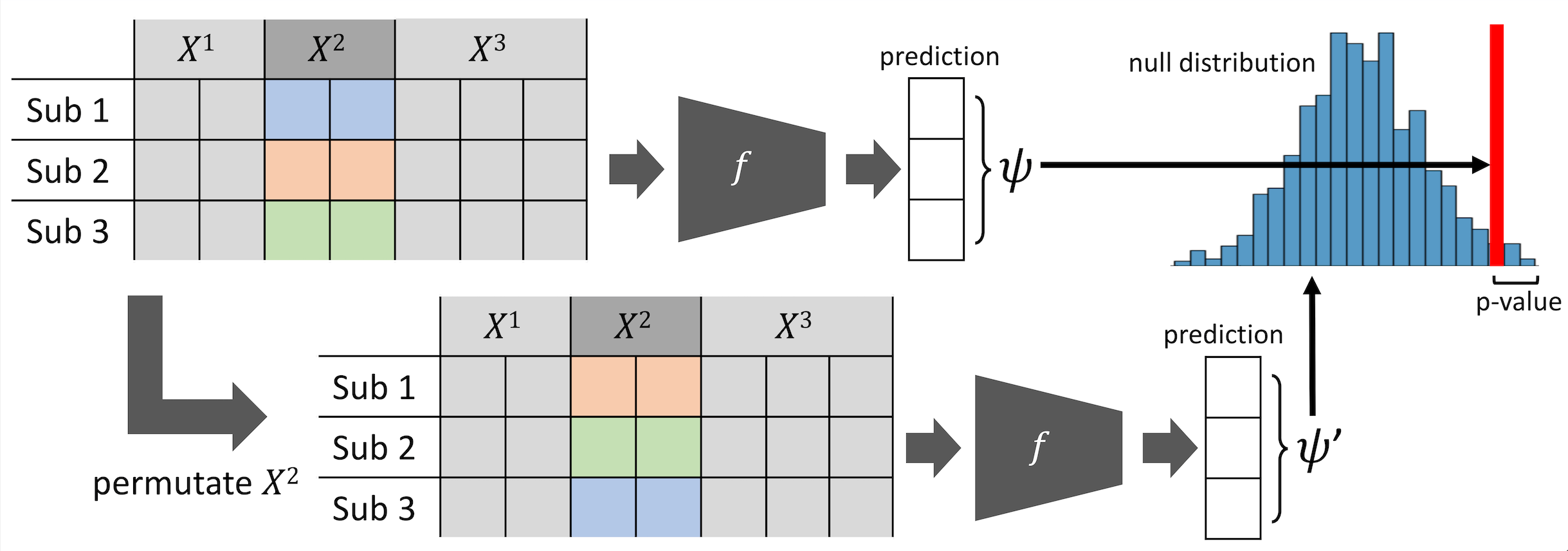Joint Hypothesis- and Data-Driven Analysis

A fundamental approach in neuroscience research is to test hypotheses based on neuropsychological and behavioral measures, i.e., whether certain factors (e.g., related to life events) are associated with an outcome (e.g., depression). In recent years, deep learning has become a potential alternative approach for conducting such analyses by predicting an outcome from a collection of factors and identifying the most “informative’’ ones driving the prediction. However, this approach has had limited impact as its findings are not linked to statistical significance of factors supporting hypotheses. In this project, we utilize a flexible and scalable approach based on the concept of permutation testing that integrates hypothesis testing into the data-driven deep learning analysis [1]. We apply our approach to the yearly self-reported assessments of 621 adolescent participants of the National Consortium of Alcohol and Neurodevelopment in Adolescence (NCANDA) to predict negative valence [2], a symptom of major depressive disorder according to the NIMH Research Domain Criteria (RDoC). Our method successfully identifies categories of risk factors that further explain the symptom.
Another critical component of this project is combining imaging and non-imaging longitudinal data to accurately analyze depressive symptoms and alcohol use of individuals. Our approach aims to align medical history, blood values, sleep habits, alcohol and substance use history, and longitudinal MRI data in the feature space using a contrastive loss.
References
[1] Paschali M et al.: Bridging the Gap between Deep Learning and Hypothesis-Driven Analysis via Permutation Testing, Predictive Intelligence in Medicine, Springer, Lecture Notes in Computer Science, Predictive Intelligence in Medicine, Springer, Lecture Notes in Computer Science, 13564, pp 13–23, 2022
[2] Paschali M et al.: Detecting negative valence symptoms in adolescents based on longitudinal self-reports and behavioral assessments, Journal of Affective Disorders, 312, pp 30-38, 2022